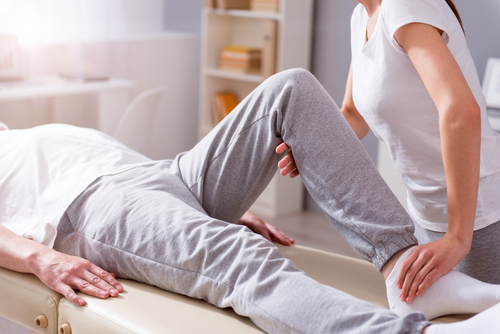PNF Exercises Can Help CMT1A Patients Prevent Foot Drop, Study Suggests

Proprioceptive neuromuscular facilitation (PNF) muscle-stretching exercises can help prevent foot drop in patients with Charcot-Marie-Tooth (CMT) disease type 1A.
The finding is reported in the study “Ipsilateral proprioceptive neuromuscular facilitation patterns improve overflow and reduce foot drop in patients with demyelinating polyneuropathy,” led by researchers at the University of São Paulo, Brazil, and published in the Journal of Exercise Rehabilitation.
PNF is widely used for rehabilitation of the neuromuscular system’s performance. It uses diagonal patterns of movement to stimulate strong muscles, triggering signals that will indirectly activate weaker muscles through the peripheral nervous system.
Despite the demonstrated benefits of PNF in patients with neuronal impairments, little is known about its effects on patients with peripheral nerve cell damage, such as CMT.
The study included 13 patients, ages 15-64, who had confirmed diagnosis of moderate to severe CMT1A. All had abnormal gait and muscle weakness, particularly the tibialis anterior muscle, which controls much of the foot’s movement.
Participants had two 40-minute PNF therapy sessions a week for a total of 10 sessions. They did three exercises, each repeated four times:
- “Chopping.” In this exercise, patients were seated on a stretcher with both arms up, wrists and fingers flexed. They were asked to shake the physical therapist’s hand by moving both upper limbs simultaneously in the direction of the hip at left or at right, without bending the elbow.
- “Flexion-abduction-internal rotation (LLD1).” Patients were lying on the stretcher, face up. One leg was stretched and moved away from the body while slightly rotating the knee toward the inside.
- “Extension-adduction-external rotation (LLD2).” Similar to LLD1, one leg was flexed and moved toward the body while slightly rotating the knee toward the outside.
During the exercises, the physical therapist applied resistance with his or her hands to increase the muscle strength needed to perform the movements.
“The exercises are performed by the strong muscle groups, and not by the weak muscle groups that need to be treated,” the researchers wrote. “This is highly relevant because it allows the patients to actively participate in the treatment.”
The researchers found that chopping toward the right side could improve tibialis anterior muscle reactivity by 52%. But the same exercise performed toward the left side did not have such a significant effect.
The LLD1 exercise led to an improved activation of the muscle of 55% and 53% as it was performed on the right or left side of the body. LLD2 exercise did not have a significant effect on tibialis anterior muscle activation.
Researchers think most of the benefit from these exercises was due to the effects of lower limb extension on ankle extension, which will ultimately facilitate foot movement.
Because patients lived far from the treatment center, the researchers were unable to follow their progression after therapy was completed. For this and other reasons, they said additional studies are required to further evaluate the long-term clinical impact of PNF therapy in CMT1A patients.





